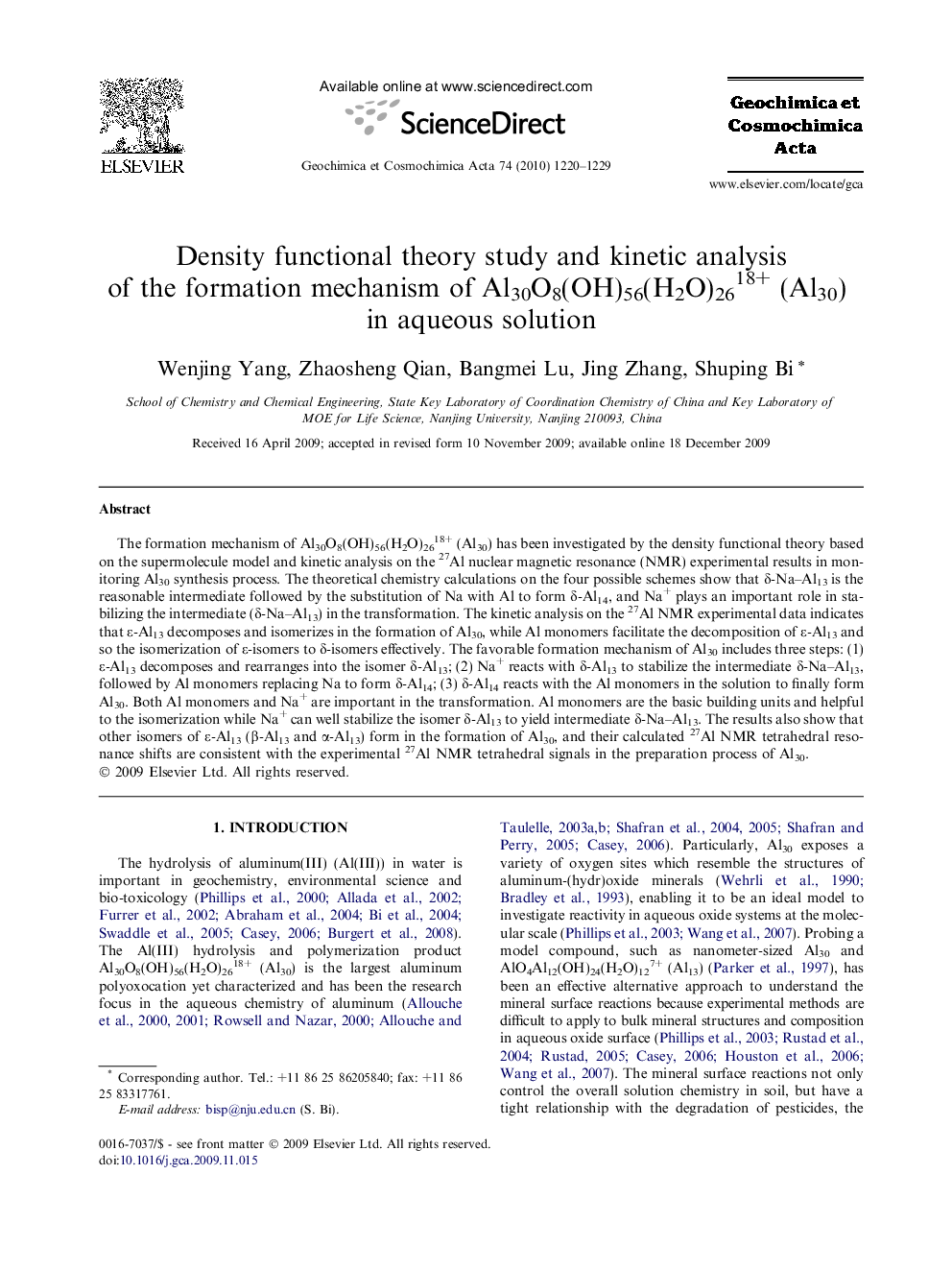| Article ID | Journal | Published Year | Pages | File Type |
|---|---|---|---|---|
| 4703740 | Geochimica et Cosmochimica Acta | 2010 | 10 Pages |
Abstract
The formation mechanism of Al30O8(OH)56(H2O)2618+ (Al30) has been investigated by the density functional theory based on the supermolecule model and kinetic analysis on the 27Al nuclear magnetic resonance (NMR) experimental results in monitoring Al30 synthesis process. The theoretical chemistry calculations on the four possible schemes show that δ-Na-Al13 is the reasonable intermediate followed by the substitution of Na with Al to form δ-Al14, and Na+ plays an important role in stabilizing the intermediate (δ-Na-Al13) in the transformation. The kinetic analysis on the 27Al NMR experimental data indicates that ε-Al13 decomposes and isomerizes in the formation of Al30, while Al monomers facilitate the decomposition of ε-Al13 and so the isomerization of ε-isomers to δ-isomers effectively. The favorable formation mechanism of Al30 includes three steps: (1) ε-Al13 decomposes and rearranges into the isomer δ-Al13; (2) Na+ reacts with δ-Al13 to stabilize the intermediate δ-Na-Al13, followed by Al monomers replacing Na to form δ-Al14; (3) δ-Al14 reacts with the Al monomers in the solution to finally form Al30. Both Al monomers and Na+ are important in the transformation. Al monomers are the basic building units and helpful to the isomerization while Na+ can well stabilize the isomer δ-Al13 to yield intermediate δ-Na-Al13. The results also show that other isomers of ε-Al13 (β-Al13 and α-Al13) form in the formation of Al30, and their calculated 27Al NMR tetrahedral resonance shifts are consistent with the experimental 27Al NMR tetrahedral signals in the preparation process of Al30.
Related Topics
Physical Sciences and Engineering
Earth and Planetary Sciences
Geochemistry and Petrology
Authors
Wenjing Yang, Zhaosheng Qian, Bangmei Lu, Jing Zhang, Shuping Bi,
